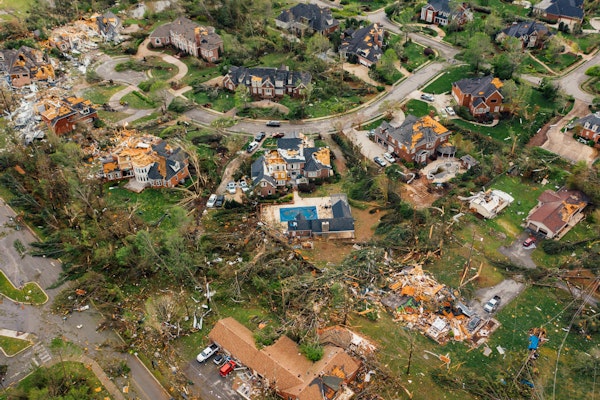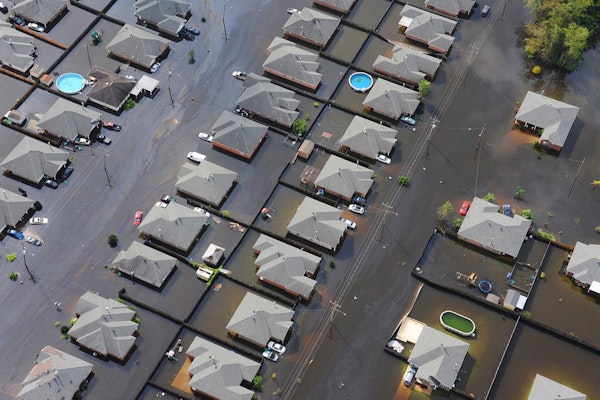
Businesses Face Growing Pressure to Address Climate Risks
As climate risks increase due to more frequent and severe weather events, businesses must adopt resilient strategies to protect operations, assets, and supply chains.
December 16, 2024
Catastrophe
Insurance Industry
Risk Management
Technology

Florida Unveils Elevation Program to Mitigate Flood Risks for Homes
Florida introduces the Elevate Florida program, offering grants and SBA loans to elevate flood-prone homes, aiming to reduce claims, lower insurance rates, and improve disaster resilience.
December 11, 2024
Catastrophe
Insurance Industry
Legislation & Regulation
Property
Florida

Dynamic Pricing Transforms Insurance with Real-Time Premium Adjustments
Dynamic pricing powered by AI, IoT sensors, and telematics is revolutionizing insurance by enabling real-time premium adjustments based on market trends and customer behavior.
December 10, 2024
Catastrophe
Insurance Industry
Risk Management
Technology
Florida

Modern Building Codes Hold the Key to Reducing Disaster Costs
Modernized building codes can significantly cut disaster recovery costs, but inconsistent adoption across states remains a major challenge as climate risks grow.
December 9, 2024
Catastrophe
Legislation & Regulation
Property
Risk Management
Alabama
Delaware
Florida
Louisiana
Virginia

Freeze Claims: Strategies for Swift and Effective Resolution
Learn how proactive risk management, clear communication, and expert coordination can turn a freeze claim disaster into a successful recovery.
December 9, 2024
Catastrophe
Education & Training
Property
Risk Management
Arizona
Florida
New Mexico

Global Insurance 2025: Navigating Challenges to Achieve Growth
The global insurance industry faces inflation, natural disasters, and shifting demographics but finds opportunities for innovation and expansion into emerging markets.
December 9, 2024
Catastrophe
Property
Risk Management
Technology
California
Florida
New York
Washington

P&C Insurers Face New Risks Faster Than Business Practices Adapt
A new report highlights how emerging risks like severe weather and fraud are testing U.S. P&C insurers, urging faster adoption of AI and aerial imagery technologies to stay competitive.
December 5, 2024
Catastrophe
Property
Risk Management
Technology

Florida Matches Record Hurricane Landfalls in 2024, Reports Howden Re
The 2024 Atlantic hurricane season, marked by record Florida landfalls and extreme storm activity, ranks among the most impactful in recent history, Howden Re reports.
December 5, 2024
Catastrophe
Property
Risk Management
Technology
Florida
North Carolina
Tennessee

Homeowners Face Triple Disaster Risks and Insurance Gaps
Over 33,000 U.S. homes face extreme risks from three natural disasters, exposing gaps in insurance coverage and highlighting the urgent need for multi-peril resilience planning.
December 3, 2024
Catastrophe
Insurance Industry
Property
Risk Management
California
Florida
Texas
Washington

Insurance Faces Data Challenges in Climate Risk Planning
Fragmented data sources and limited integration are stalling the insurance industry’s ability to address climate risks, experts emphasize at the Global Insurance Forum.
December 2, 2024
Catastrophe
Legislation & Regulation
Risk Management
Technology
Florida

AI Tool Creates Accurate Satellite Images Predicting Floods
MIT researchers combine generative AI and physics models to create realistic satellite images of future floods, enhancing readiness and emergency planning.
December 2, 2024
Catastrophe
Insurance Industry
Risk Management
Technology
Texas

Record-Breaking 2024 Hurricane Season Ends with $50 Billion in Insured Losses
The 2024 Atlantic hurricane season, ending with 18 named storms, saw record-breaking storms, including Hurricane Milton, which inflicted billions in insured losses across the U.S.
December 2, 2024
Catastrophe
Insurance Industry
Property
Risk Management
Florida
Georgia
Louisiana
North Carolina
South Carolina

Essential Tips for Safely Deep Frying a Turkey This Thanksgiving
Deep frying a turkey can result in a delicious holiday centerpiece, but it’s essential to follow safety precautions to avoid injuries or fires. Here’s how to fry safely.
November 26, 2024
Catastrophe
Property
Risk Management

Rising Climate Risks Drive 13% of US Homebuyers to Consider Moving
Concerns about natural disasters and climate risks are influencing 13.7% of US homebuyers to relocate, with low-risk areas seeing faster home value growth for the first time since 2010.
November 22, 2024
Catastrophe
Insurance Industry
Property
Risk Management
California
Florida
Texas

Sea Level Rise by 2100 Could Displace Millions and Damage $1 Trillion in Property
A one-meter rise in sea levels by 2100 may expose over 14 million people and $1 trillion worth of property to flooding, erosion, and subsidence along the Southeast Atlantic coast.
November 22, 2024
Catastrophe
Legislation & Regulation
Property
Risk Management
Florida
Virginia





